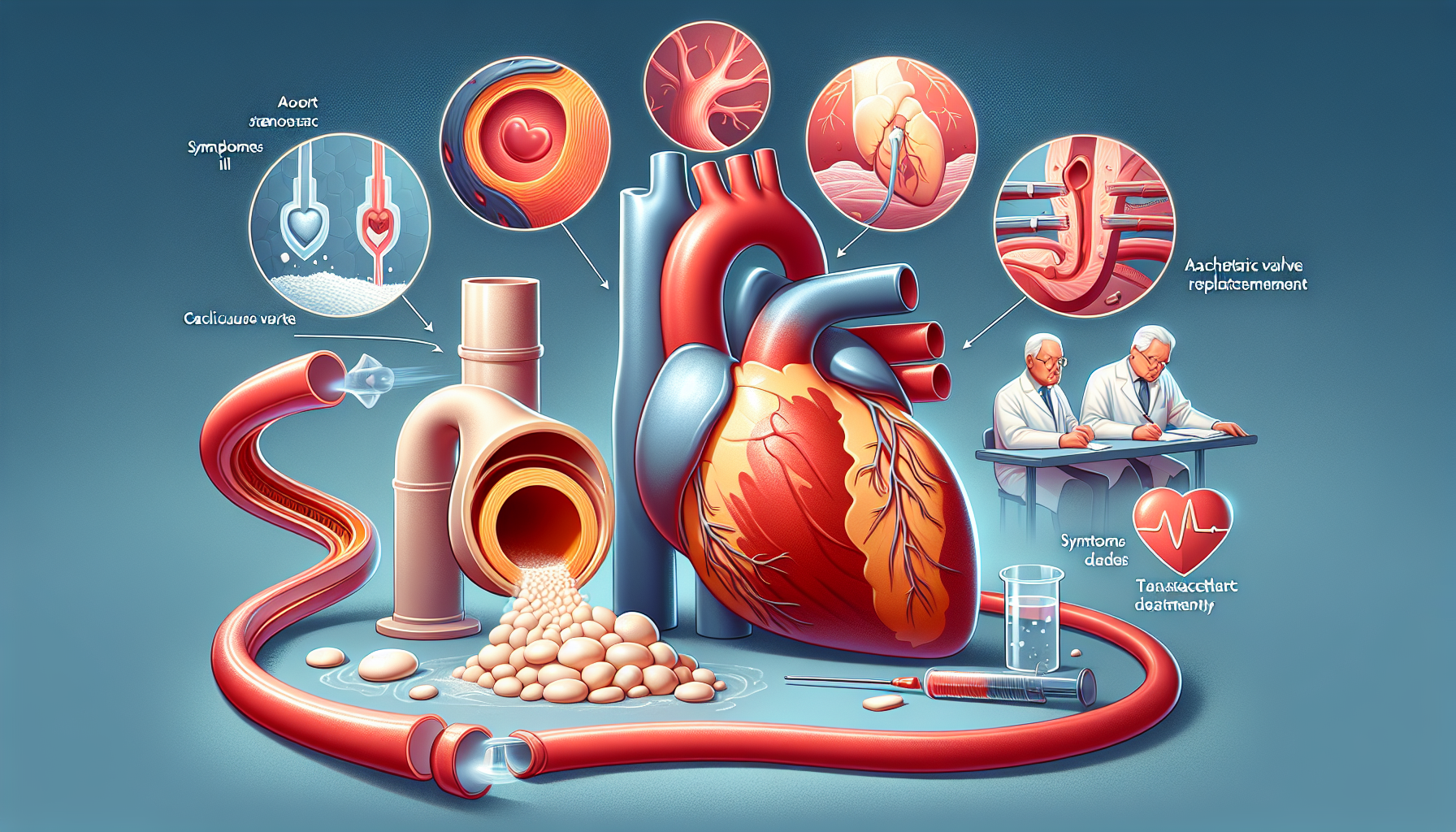Understanding Aortic Stenosis: The Silent Cardiac Threat
Introduction: Is your heart failing silently?
Have you ever felt sudden chest pain or dizziness and brushed it off as something minor? For many elderly individuals, these symptoms could be warning signs of a more severe health issue — aortic stenosis. This cardiac condition silently threatens lives by restricting blood flow from the heart to the rest of the body.
What Is Aortic Stenosis?
Aortic stenosis is a condition where the heart's aortic valve narrows, blocking blood flow from the heart to the main artery (aorta) and onwards to the rest of the body. Typically, this occurs when the aortic valve becomes calcified over time, a process exacerbated by age. The heart works harder to push blood through the narrowed valve, leading to symptoms like chest pain and syncope (fainting). Interestingly, this condition often creeps in without obvious signs in the early stages, making regular cardiac evaluations crucial for the elderly.
Causes and Risk Factors: Who Should Be Concerned?
Several factors contribute to the development of aortic stenosis. Primarily, it is a degenerative condition associated with aging. As the valve withstands over a lifetime of heartbeats, its tissues can stiffen and calcify. Besides age, specific congenital heart defects can predispose someone to aortic stenosis. For instance, some people are born with a bicuspid aortic valve, which has only two cusps instead of the usual three, increasing their risk. Diseases such as rheumatic fever can leave lasting effects and lead to this condition. The lesson here? Even symptoms that seem minor should not be dismissed, especially in older adults.
Symptoms and Progression: From Slight Discomfort to Severe Complications
In its mild stages, aortic stenosis might not display any noticeable symptoms. However, as the condition advances, the heart struggles more visibly to pump blood, leading to classic signs like shortness of breath, fatigue, and angina (chest pain). As the condition worsens, it can lead to heart failure — marked by an irregular heartbeat, profound fatigue, and fainting spells. This silent progression emphasizes the need for vigilance and proactive health screenings, particularly for seniors.
Diagnosis: Finding Clarity Amidst Confusion
Diagnosing aortic stenosis typically involves heart imaging techniques, such as echocardiography. This non-invasive test uses sound waves to map the heart’s structures and functions, clearly showing how well the aortic valve is operating. Based on the severity detected, treatment plans can be formulated — ranging from monitoring mild cases with lifestyle changes and medication to surgical intervention for those with severe stenosis.
Treatment Options: Modern Solutions to a Traditional Problem
For those with severe aortic stenosis, surgical valve replacement can offer a lifeline. Advancement in medical technology has introduced innovative procedures like the transcatheter aortic valve replacement (TAVR), allowing doctors to insert a new valve without removing the old, damaged one, sometimes even avoiding open-heart surgery altogether. Furthermore, the introduction of sutureless valve techniques has minimized operative time and risks, presenting a promising future for aortic stenosis patients.
Innovations and Future Directions: Hope on the Horizon
Exciting advancements continue to change aortic stenosis treatment. Surgeons now have access to tissue valves treated with calcification-resistant materials, potentially extending the lifespan of these replacements. This progress means fewer re-operations for patients, offering a quality life for longer periods. Continued research and development aim to enhance these technologies, with the potential to revolutionize heart valve treatments for current and future generations of patients.
Conclusion: A Call to Action
As thrilling as these medical advancements are, they serve as a reminder of the importance of catching aortic stenosis early. If you or your loved ones are over 60 and experience symptoms like chest discomfort or shortness of breath, consider scheduling a heart health checkup. These seemingly minor signs might signal a condition that modern medicine can manage effectively, but only if spotted in time. Can we afford to ignore our heart's silent cries for help? Regular checkups could pave the way to not only prolonged life but also a life of higher quality. Stay vigilant, stay informed, and most importantly, listen to your heart.
This post aims to shine a light on the importance of timely detection and the ongoing evolution in the management of aortic stenosis. Making heart health an everyday conversation can be the first step towards healthier communities. Share this with friends and family and encourage them to take charge of their heart health today.

